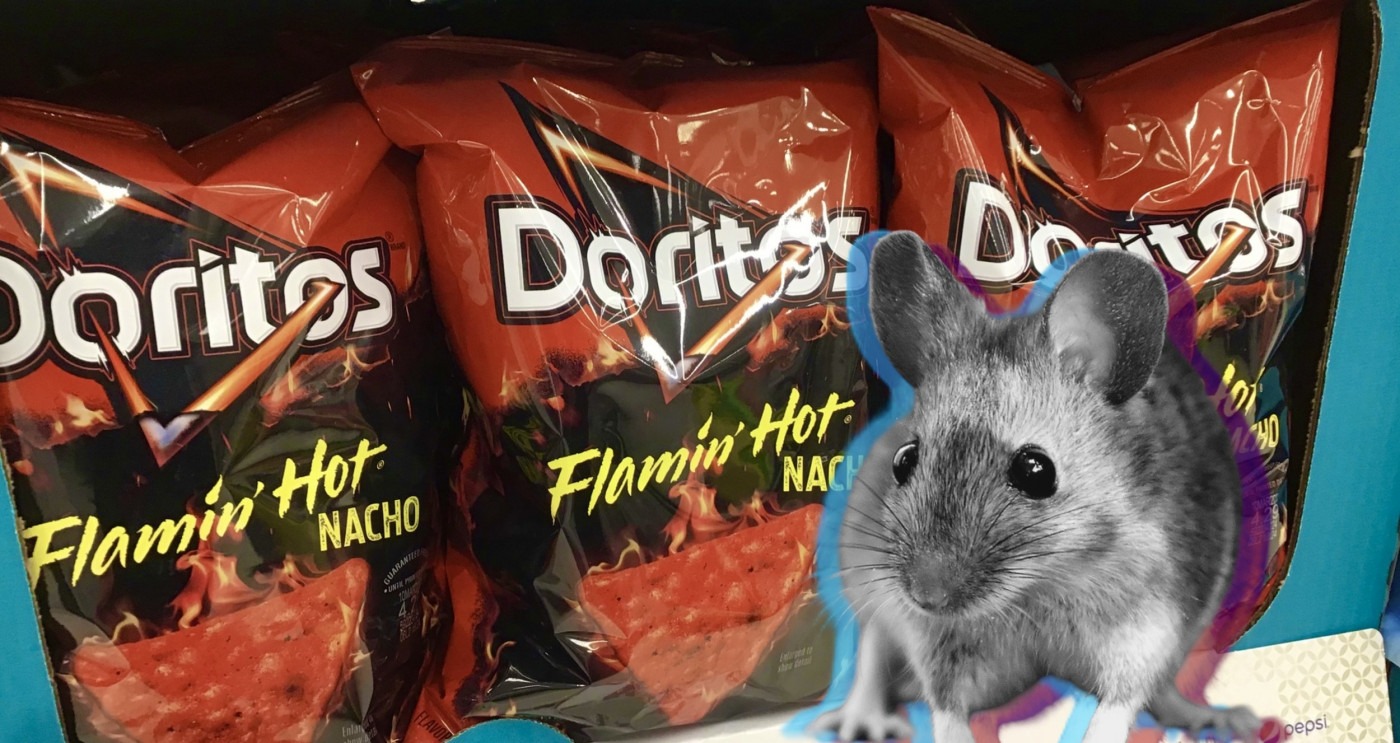Could Dorito dust turn mice invisible? A common food dye’s effects on the body may be stranger than fiction
Have you ever wanted to disappear? Perhaps your Fresher’s Week icebreaker was far less funny than you expected, or maybe the girl you were getting to know in Pop! turned out to be three years older than you with a boyfriend who works in the City of London. Anyway, you now want nothing more than to vanish into thin air, leaving behind only an undrunk glass of purple and a litany of poor life decisions. Well now, thanks to researchers at Stanford University, that might just be possible! Sort of.
A research paper published in the prosaically named Science journal on 5 September has found that a common food dye tartrazine, best known for giving the dust of Doritos its distinctive orange hue, can when mixed with water, render the skin of mice transparent. In a series of experiments, scientists massaged a tartrazine solution onto the rodents’ shaved stomachs allowing them to see through the skin and observe the working internal organs and digestive tract underneath. Wiping the dye onto their scalps, meanwhile, allowed the researchers to see blood vessels in the brain. To top off the magic trick, cleaning the dye off the mice restored them completely to corporeal form, with no apparent ill effects.
To top off the magic trick, cleaning the dye off the mice restored them completely to corporeal form, with no apparent ill effects
Why on earth does this work? The process behind it, was first dreamt up over a hundred years ago; not by a visionary of science, but by one of science-fiction. In his 1897 book The Invisible Man, H. G. Wells’ brilliant scientist Jack Griffin invents a serum to turn himself transparent. Wells, through Griffin, posits that the key to invisibility lies with light refraction — the phenomenon that makes a pencil appear to bend in a glass of water. Any material, when hit with light, will change the course of those particles slightly. Different materials will ‘bend’ the light in various ways, and this is known as the refractive index. When light particles hit the skin, for instance, the different refractive indices of all the substances inside the skin (fats, water, etc) will send the particles firing off in all directions, leading to the skin appearing opaque. Wells’ character Griffin is able to create a serum that matches the refractive index of his body with that of the air, allowing light particles to pass completely through him. He thereby renders himself totally and permanently invisible and promptly goes mad.
127 years later, the researchers at Stanford have arguably been able to do Griffin one better – their mice are not invisible, but their process at least is reversible. Led by Dr. Zihao Ou, the researchers figured out that, perhaps counterintuitively, some types of dye could make it easier to see through substances, by altering their refractive indices so that light particles could pass through unimpeded. After some tests, they settled on tartrazine, which is powerfully absorbent of blue light. It is so powerful, that it altered the refractive index of skin tissue enough so that red light, on the opposite end of the light spectrum, could pass through far more easily. Massaging the tartrazine solution into the skin of mice meant that as far as the dye could be absorbed by the skin, light particles could pass through. Therefore, making the skin transparent and allowing the organs inside to be illuminated.
Massaging the tartrazine solution into the skin of mice meant that as far as the dye could be absorbed by the skin, light particles could pass through
The result has blown away the scientific community. Dr Christopher Rowlands, a British scientist who reviewed the research, praised the discovery as “revolutionary” in an interview given to Popular Science. “In optics, we spend an awful lot of time trying to increase [how well we can see into tissue] by 20% or 50%,” Rowlands said. “These guys come along, and they annihilate the boundary by a factor of 10”. It’s the difference, he notes, between millimetres and inches below the skin, and there are a wealth of implications for medical treatment and research.
Tartrazine solution would be a vastly cheaper and a less invasive alternative to exploratory surgery in helping diagnose ailments like cancer. It could be used to simplify the process of drawing blood by making veins more easily visible. It could help speed up light-based treatments, too, like laser tattoo removal or photo-thermal therapy. As far as research goes, it’s a breakthrough moment for scientists who observe biological processes in animals. Having until now been relegated to naturally see-through animals like the zebrafish, tartrazine solution could throw open the door to a whole world of new subjects.
For humans, however, any thoughts of invisible men will have to wait. For now, the researchers strongly discourage any testing on humans until the process can be confirmed as non-toxic: “I would suspect that dumping that amount of anything into a live organism is going to have some substantial effect,” Rowlands cautions. So, until the process can be fully understood, rather than dowsing yourself in tartrazine solution to escape awkward social situations, it may just be better to salvage what pride you have and slowly walk away.

Comments